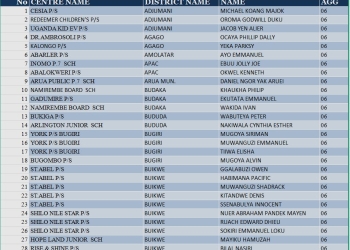
KAMPALA, UGANDA — New household data released by the Uganda Bureau of Statistics (UBOS) provides a detailed look at the demographic landscape of Kampala’s five urban divisions, revealing significant disparities in household numbers and average sizes across the capital city. The statistics underscore the diverse nature of Kampala’s urban sprawl, from bustling commercial centers to densely populated residential areas.
According to the UBOS report, Makindye Division recorded the highest concentration of households, totaling 149,805. This division also supports the largest household population within the city, with 425,888 residents, and maintains an average household size of 2.8 persons. Officials at UBOS attribute Makindye’s leading figures to its status as the largest division in Kampala, which has seen substantial residential development in recent years.
Close behind Makindye, Nakawa Division registered 134,015 households, housing a population of 386,536 people, with an average household size of 2.9. This division is noted for its ongoing rapid urban development.
Kawempe Division is another highly populated area, with 102,319 households and a household population of 300,663, also recording an average household size of 2.9. Its high number of households reflects its status as one of Kampala’s most densely populated divisions.
Rubaga Division follows with 113,516 households, a population of 327,998, and an average household size of 2.9. This division is characterized by a “balanced mix of traditional urban settlements and new residential zones,” according to the data.
In contrast to the larger residential divisions, Kampala Central Division stands out for its significantly lower household count and smallest average household size. It recorded just 29,402 households, serving a population of 68,665. With an average household size of 2.3, the division’s figures reflect its primary role as a commercial, administrative and institutional hub rather than a predominantly residential area.
Beyond the divisional breakdown, the UBOS data also provided an update on Kampala’s overall population growth. The capital’s population expanded from 1,507,080 people in 2014 to 1,797,722 people in 2024, indicating continued urbanization. The 2024 figures show a slight gender imbalance, with 1,004,884 males and 792,838 females.
The total household population for Kampala was enumerated at 1,509,750 people, while the non-household population, which includes individuals in institutions or communal living arrangements, stood at 287,972 people.
Further insights into the city’s demographics highlight its age distribution. Children aged 0-17 years constitute a significant portion of the population, numbering 673,957. Adults aged 18 and above account for the majority, with 1,123,765 people. The working-age population (15 years and above), as defined in the international context, was recorded at 1,053,445 people. In the national context, which considers individuals aged 14-64 years, the working-age population is slightly higher at 1,057,006 people. Specific figures for older persons (60+) were not detailed in the provided data.




















